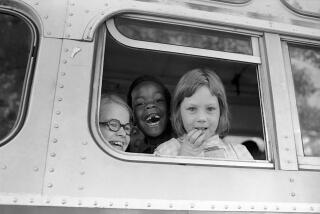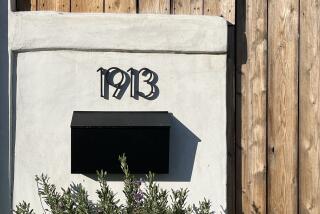Segregation continues to decline in most U.S. cities, census figures show
Reporting from Washington — American urban areas have become significantly less racially segregated over the last 15 years as middle-class blacks continue to move to suburbs and whites and Latinos move into neighborhoods that were once heavily African American, according to newly released census data.
Although black-white segregation and residential barriers remain high in some of America’s largest cities, the latest census data show a trend of continuing integration in nearly all the nation’s major urban areas.
That trend has changed the face of most American cities despite racial tensions over the last year that have cast an image of a nation starkly separated between blacks and whites, said William Frey, a demographer at the Brookings Institution here who analyzed the data.
NEWSLETTER: Get the day’s top headlines from Times Editor Davan Maharaj >>
Between 2000 and 2014, segregation between blacks and whites declined in almost all of the nation’s 53 metropolitan areas with a population of over a million, the analysis shows. Some of the biggest declines occurred in cities long divided by race, including Detroit and Chicago, but the progress was more modest in New York and Los Angeles, the nation’s two largest metropolitan areas.
In Los Angeles, for example, the average black resident lives in a neighborhood where 27.2% of the residents are black, based on an average of 2010 to 2014 figures. By contrast, in 2000, the average black resident lived in a neighborhood that was 32.6% black.
For blacks in Chicago, the average resident lives in a 64.4% black neighborhood, down from 72.2% in 2000.
As greater numbers of economically mobile African Americans continue to move into suburban areas, Frey said, they will likely gain a greater political voice in communities where they have previously had less influence.
But the migration into suburbs isn’t the whole story. Detroit and Kansas City, for instance, had the two biggest gains in integration, but while the change in Kansas City came from a large movement of blacks from the central city to the suburbs, the drop in Detroit’s segregation level reflected many blacks leaving the region entirely, said John Logan, a sociologist at Brown University who studies residential diversity.
Logan attributed most of the decline in segregation to what he called the phenomenon of “global neighborhoods” -- areas that were once all-white where blacks have moved into, typically after Latinos, sometimes along with Asians, had integrated the neighborhood.
The picture of racial integration for Latinos was more mixed, the Census Bureau results indicate. Latino-white segregation has risen since 2000 in certain metropolitan areas predominantly in the Southeast and Midwest -- Memphis, Tenn., and Columbus, Ohio, to name two. New Latino arrivals have tended to cluster in immigrant-heavy neighborhoods, but the overall levels of racial separation in those cities remain relatively low, Frey found.
Cities with the most Latinos, including Los Angeles and New York, have experienced a small decline in segregation. In those cities, the dispersal of long-standing Latino populations has outweighed the tendency of new immigrants to cluster.
Segregation among blacks and whites rose in five metropolitan areas, although the level of racial separation is relatively low in each of those areas. The five were San Jose; Tucson and Phoenix, Ariz.; Raleigh, N.C.; and the Virginia Beach-Norfolk area in Virginia.
The analysis looked at two ways of determining residential segregation. One is a statistical measure of what share of the individuals in each racial group would have to switch neighborhoods to achieve perfect integration, which would correspond to zero on an index where 100 would represent complete segregation.
See the most-read stories this hour >>
Of the major metropolitan areas, the new census data show, Milwaukee has the highest black-white segregation, with a value of 81, followed closely by New York and Chicago. Los Angeles has an index of 68, ranked eight.
The other segregation measure compared racial compositions in neighborhoods where the average white, black or Latino resident lives.
For example, the average white person in Los Angeles now lives in a neighborhood that is 53.1% white, compared with 58.4% in 2000. By contrast, the average Latino in L.A. now lives in a neighborhood with a slightly larger percentage of Latino residents, 63.3%, compared with 61.5% in 2000.
The findings are based on an analysis of data from the 2000 census and an average of the figures from the bureau’s 2010 to 2014 American Community Survey.
ALSO
Shooters in black masks kill 14 and wound 17 others at holiday party
NFL owners set special meeting on L.A. and deadline for three home markets
More to Read
Sign up for Essential California
The most important California stories and recommendations in your inbox every morning.
You may occasionally receive promotional content from the Los Angeles Times.











